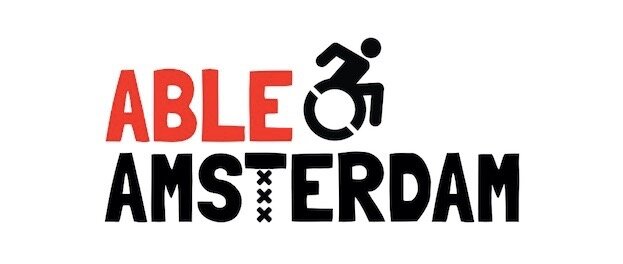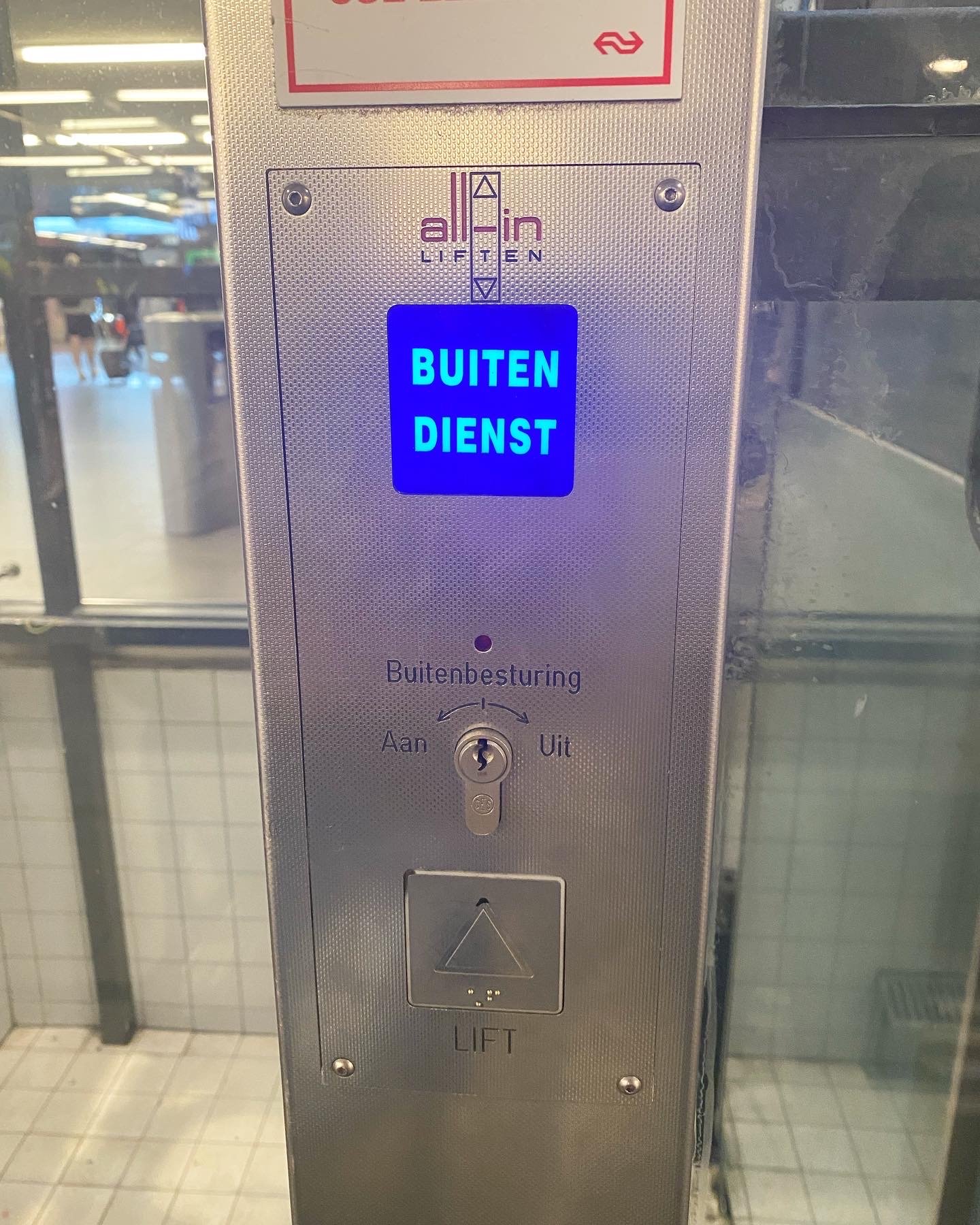How do wheelchair users experience public transportation in Amsterdam?
Amsterdam has a vast public transportation network. Tram tracks and bus lanes wind through the city’s cobbled streets. Each day an endless number of residents and tourists get on and off train and metro carriages. Perhaps you’ve even spotted (or travelled on) one of Amsterdam’s ferries. In short, public transportation in Amsterdam is an important means to enjoy, and participate in, city life.
In 2022 — as part of my MSc Social Policy & Public Health degree — I researched Amsterdam’s public transportation from the perspective of disability. Inspired by my personal experience as a wheelchair user, I focused on how wheelchair users experience public transportation in Amsterdam. What types of experiences do wheelchair users have with public transportation in Amsterdam? What factors shape these experiences? Are all the experiences the same? What makes them different?
Six months, 12 in-depth interviews, 2 public transport journeys, and 1 accessibility workshop later, I summarised my findings in my thesis: “You’re in a different world if you have a disability”: Exploring wheelchair users’ lived experience of public transportation in Amsterdam, The Netherlands
Today, I’m sharing the first of three results chapters. The segment below is all about ‘The Built Environment’, i.e. the influence of human-made public transportation infrastructure and facilities. All names below are pseudonyms. The following text is directly quoted from my thesis:
Platforms
“Firstly, a number of participants emphasised that the design of platforms shaped their lived experience of public transportation in Amsterdam. An important factor was the extent to which the carriage floor and platform “seamlessly connect” (Rick). The metro platform was, for example, described to be the “most” (Ari) accessible, as it is often “equal in height” (Ari) with the carriage entrance. This means that wheelchair users can independently manoeuvre and “don’t have to put in any effort” (Pieter). During my public transportation trip with Carry, for example, she smoothly rolled into the metro carriage at Reigersbos and exited just as easily at Amsterdam Central Station (see Appendix 3).
However, it is “not the case” (Rick) that the metro platform and carriage are always at an equal height. Laura described that they can have a “big gap in between”. For Ari — a manual wheelchair user — the gap means she “would not be able to get on [the metro] by [herself]” and needs her boyfriend to help push her in and out. For Laura and Carry — both electric wheelchair users — the gap means their “little rear wheels sometimes move horizontally” (Laura) or “turn in all directions” (Carry) which makes it “scary to [go in and out] alone” (Laura). Platform infrastructure thus shapes the extent to which wheelchair users can be independent. Whether or not the metro platform is level with the carriage was described to “differ depending on the station” (Carry).
Participants shared similar experiences with the design of tram platforms. “Many [tram] platforms are not adapted,” Annelies explained. Some tram platforms were considered “too low” (Emma), which creates a big “height difference” (Emma) between the platform and the tram. As a result, wheelchair users “need to use a ramp” (Rick) — making them dependent on the help and skill of others, and whether the ramp technology actually works (Rick).
In Amsterdam, the gap between the metro carriage and the platform can be quite large
The entrance to an InterCity train, only accessible with a portable ramp
Aside from the platform height, Emma, Carry, and Marion all described challenges that can come with the platform width. “Sometimes you can’t even get onto [the platform] because it’s so narrow,” Carry said. Emma added: “Often, when it’s busy, you can’t pass in a wheelchair. I’m constantly asking people if they can move aside”. In some cases, the tram platform was so narrow that “you are basically on the bicycle path” (Emma) by the time you reach the end of the ramp. Marion recalled a similar experience:
There’s a stop just past [the] Albert Cuyp Market. When they put the ramp down to get off the [tram], you’re onto the road... There’s nowhere for you to get down... it comes down onto the kerb, but there’s no kerb left... [and you end up] in front of cars.
Due to the variation in platforms, several participants have learned to take particular routes for an easier experience. During my public transportation trip with Pieter — a manual wheelchair user — he had the choice of two tram stops to get from Hugo de Grootplein to Amsterdam Central Station. Pieter deliberately chose the lower platform, as he knew this would allow him to enter the tram independently (see Appendix 3). Learning to navigate the accessibility of public transportation was echoed by Felix, who said “[you] get to know your way around”. Rick also explained that his past experience with public transportation has taught him what to anticipate and where to go.
Lifts
Participants also emphasised that lifts shaped their lived experience of public transportation. Overall, participants explained that station lifts in Amsterdam are “broken quite often” (Elisabeth). Pieter, for example, said “the lift at Amsterdam Zuid [Station] from the tram to the train is basically always broken”. Carry mentioned the IJ Passage platform lift in Amsterdam Central Station often does not work. Abel similarly recalled that “one of the lifts is [usually] broken” at the Amstelveenseweg metro stop. According to Annelies, a particular lift at Sloterdijk Station was “broken for more than two years”. The recurrence of broken lifts was reiterated during both public transportation journeys with Pieter and Carry, during which a total of four lifts were out of order (see Appendix 3).
Broken lifts make the experience of public transportation considerably more challenging (Ari; Rick). This is partly because broken lifts can make or break the accessibility of a mode of transport. Rick explained: “I’d consider the metro to be the most accessible, but then the lift has to work. The moment the lift doesn’t work, [the metro] is a terribly inaccessible thing”. Annelies similarly said, “I mean, I want to go [with public transportation] more often, but if the lifts don’t work then I still can’t get to the metro”. Annelies thus emphasised the “whole system” has to work properly in order for wheelchair users to utilise public transportation.
A broken lift at Amsterdam Central Station
“Out of order”
For Ari, broken lifts have been upsetting, “stressful”, and can “ruin [her] day”. Ari explained: “[It’s because] you were just going somewhere and then suddenly... Oh my God... I cannot get out [of the station]”. Rick explained that when things like this happen it “makes him feel really disabled, because then [he] can’t participate”.
When there is no alternative working lift, broken lifts “generally mean having to take a much longer route” (Rick). Pieter has arrived late to appointments as a result, while Ari has had to cancel plans all together. The high frequency of broken lifts has led Annelies to “consciously leave the house earlier” and means her “trust in public transportation is completely gone”.
Signage
Several participants also discussed the importance of accessibility signage in shaping their lived experience of public transportation. This includes wheelchair icons marking accessible routes or signs for designated wheelchair spaces. Good signage can help wheelchair users to know “where [they] should be going” (Ari) and can ease interactions with other passengers by reminding others that a particular carriage has “a wheelchair area” (Ari).
Signposting for the wheelchair space makes it easier and clearer for other passengers
No immediate signposting for the lift at the Reigersbos metro station
Some participants felt that “signage can be better” (Marion), particularly station signage indicating how to get to the lift (Marion; Pieter). Pieter, for example, has often “really had to look for the lift”, especially when he is at a station he has not been to before. Marion echoed this sentiment and elaborated on how inadequate signage has shaped her experience of public transportation:
Signage is not always very good about where the lift is. You come off and then you go one way down the metro and then you discover all the elevators are at that end of the metro... If you’ve got to wheel along the length of the platform, it is smooth... But to try and get to the other end, I mean, it all costs energy... It takes away from the enjoyment of what you’re going to do.
Annelies further highlighted that the mere presence of signage is not enough — it has to be legible in order to actually help. The sticker that indicates who to contact in the event of a broken lift, for example, is often placed too high for wheelchair users and has “larger letters and smaller letters” (Annelies). The smaller letters in particular are impossible to read if you are seated in a wheelchair (see Appendix 1, Photo 7).”
A GVB customer service sticker with a phone number and opening hours
The sticker is impossible to read if you’re seated in a wheelchair
A lift sticker with instructions on what to do if you’re stuck in the lift
Once again, placed far too high for wheelchair users to read
What to learn more?
The above text is a small part of my 2022 MSc research thesis titled: “You’re in a different world if you have a disability”: Exploring wheelchair users’ lived experience of public transportation in Amsterdam, The Netherlands.
My research included — amongst other qualitative methods — 12 in-depth interviews with manual and electric wheelchair users living in Amsterdam. I invite anyone interested to read my thesis by clicking the button below.













